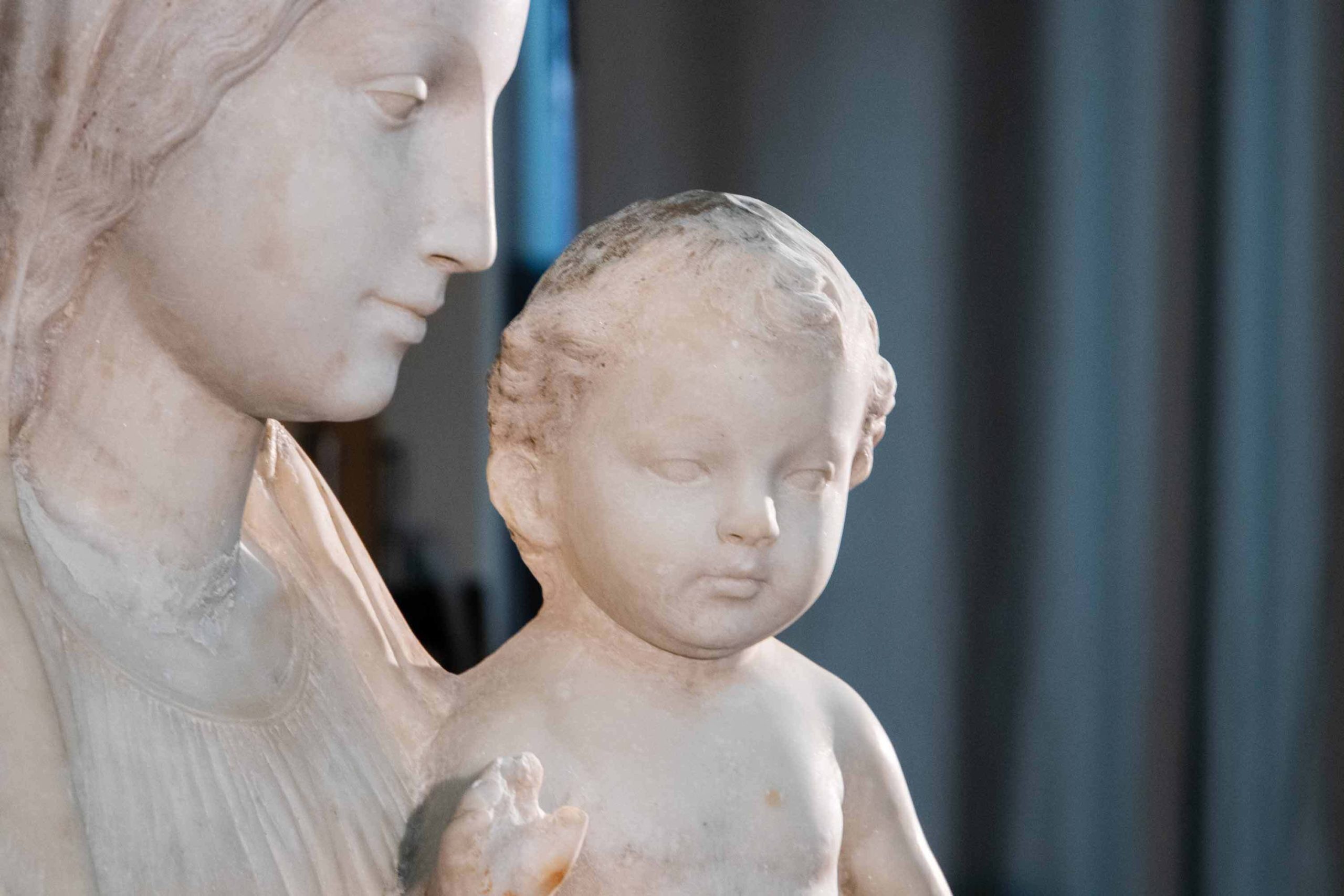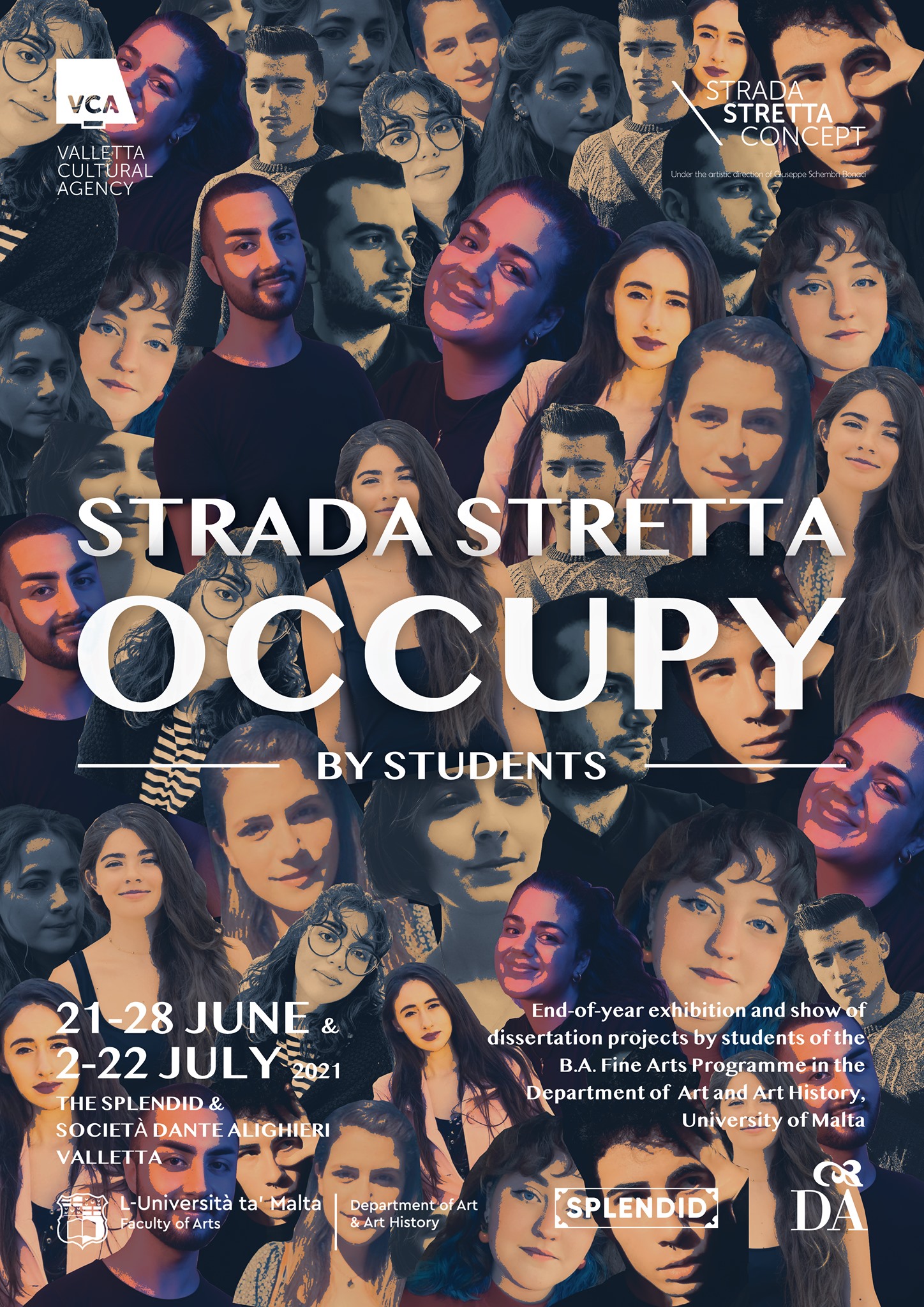Commissioned over half a millennium ago, Antonello Gagini’s Madonna and Child has been silently standing tall in a Franciscan church in Rabat for the past five centuries. Little was known about the Renaissance sculpture, but a recent study is tracing the statue’s history. Caroline Curmi speaks to art historian Dr Charlene Vella and University of Malta student Jamie Farrugia about their findings.
Continue readingThe Damned Sublime: Exploring right and wrong through art
700 years ago, Dante Alighieri explored the damned and the sublime in his La Divina Commedia. In 2021 B.A Fine Arts students at the University of Malta dive into this theme through their explorations of the whimsical, the grotesque, and the celestial, as well as the profound, the landscape, and the human form.
In an art exhibition named Damned Sublime, students following the Painting Workshop study unit with the Department of Art and Art History, Faculty of Arts, University of Malta, explore the themes Dante touched on in his Divine Comedy.
What is the Damned Sublime?
The scope is based on ‘oxymorons that interweave the damned with the sublime, understanding such juxtapositions as recalling early human encounters.’ Ever since the story of Adam and Eve, there has been the concept of ‘good’ and ‘bad’ deeds.
But what if there are no inherent wrongs and rights? What if the good is the bad, and the bad is the good? What if the damned is sublime and the sublime is damned?
Rather than ending up in eternal hell or heaven, people should pay the right price for committing a sin. Justice, according to Dante, is about restoring balance. In this sense, a murderer may have to experience being murdered over and over again in hell.
While looking into these themes, students realised that the damned and the sublime are not easily categorised. ‘There is cross-fertilisation between the two, depending on the personal point of view,’ participating students said.
Interpretations
The theme of this multimedia exhibition was interpreted in varying ways. Some students portrayed the damned, from which the sublime emerges. In contrast, others interpreted it as the sublime, which is tainted by the damned.
Students explored internal emotional struggles and childhood fantasies showing the whimsical and the grotesque. Others delved into the representation of Dante’s Inferno, Purgatorio, and Paradiso, the ever-changing landscape, or the exploration of love and lust.
There are students who created a dialogue with the local landscape and local newspaper articles, representing the developments and changes that the island and its citizens are constantly going through. Others portray the changes in the body, dealing with gender identity, or explore the idea of ruin.
There are other combinations of elements where one can see a mutual relationship, where without one, the other would fail to exist. As participating students said: ‘Life brings with it positive and negative things, and both can be the cause of either good or bad.’
Perhaps it is not so much the objective experiences and events that shape one’s life, but what those experiences become in the light that one sheds on it. What seems damned at the time might end up being sublime due to ever-changing circumstances. Likewise, things might be sublime for one yet damned for the other.
This exhibition, whilst engaging with the works of past masters such as Josef Kalleya, Giovanni Battista Gualli, and Salvador Dalí, explores the dualism between the damned and the sublime further as it encompasses various aspects of the theme: earthly life, spiritual life, fantasy, landscape, and identity.
Beyond oil medium
The main medium used is painting, but students moved beyond the medium by creating installations and incorporating different media. The media used embodies the meaning behind each artwork.
Though it is a multimedia exhibition, the oil medium is central to Damned Sublime, and it unifies all the exhibited works. Common between all artworks is the dismantling of forms in an attempt to create new concepts and ideas based on the students’ own artistic exploration.
Info
Damned Sublime is the title of the first part of the exhibition Strada Stretta Occupy by Students, which will be followed by a display of the dissertation projects by Fine Arts students.
The two-part exhibition series is part of the Dante 700th anniversary 2021 celebrations organized by the Department of Art and Art History, University of Malta, and the Strada Stretta Concept, as part of the Valletta Cultural Agency cultural programme. The project is in collaboration with the Società Dante Alighieri – Comitato di Malta. A special thanks to Jason Masini who provided The Splendid as a space for this exhibition.
Participating students for the ‘Damned Sublime’ exhibition are Kylie Aquilina, Andrea Luca Bartolo, Julia Schembri Bell, Martina Darmanin, Filippa Debono, Hayden Grima, Lisa Hirth, Sacha Scicluna, Matthew Shirfield, and Jeremy Spiteri.
The students have worked under the supervision of Prof Giuseppe Schembri Bonaci for several months, who is the Coordinator of the Fine Arts programme within the Department of Art and Art History, as well as the Artistic Director of the Strada Stretta Concept.
Damned Sublime was held from 21st to 28th June at The Splendid in Strait Street, Valletta.
The Second part of the exhibition will be held from 2nd to 22nd July at The Splendid in Strait Street, Valletta and Società Dante Alighieri in Old Bakery Street. Opening hours are: Monday till Thursday from 6pm till 9pm, Friday and Saturday from 7pm till 11pm and on Sunday the exhibition is closed.
Poverty in a prospering country
Author: Samuel Casha

In 2018, anti-poverty organization Oxfam reported how in 2017, the world’s 2,043 billionaires increased their combined wealth by $762 billion–enough money to eradicate global poverty seven times over. While in past centuries, poverty was a consequence of a lack of resources, abundance is a far greater issue in today’s world. The problem is resource distribution.
The gap between the rich and poor is ever-widening, and this is a reality that is true in Malta.
Our streets might not be blighted by homeless people as in most big European cities, yet hidden poverty is increasing. In 2016, the National Statistics Office reported that 16.5% of the Maltese population live at risk of poverty. Skyrocketing property prices have their part to play, grinding society’s most vulnerable members down. Currently, over 900 families live in garages, as stated in a parliamentary meeting in May 2018.
The situation is not the fault of any one political party or another. Poverty is a structural problem. Capitalism generates poverty, just as it generates wealth. Yet, too often, those in the middle-class point their fingers not at the rich and powerful fuelling the machine, but at the poor themselves. Many assume that the poor could climb the social ladder if only they worked harder, but many are employed and still fail to achieve a decent standard of living since the minimum wage is inadequate.
Throughout history, countless artists have depicted poverty, among them Vincent Van Gogh, whose Potato Eaters (1885) remains one of the most powerful paintings about poverty in history. Criticised for its lack of a ‘conventional sweetness,’ in a letter to his brother, Vincent insisted that ‘a painting of peasant life should not be perfumed.’ Van Gogh’s Potato Eaters brings the viewer face-to-face with a type of poverty that exists behind closed doors. Malta’s poverty problem is exactly that: behind closed doors. If we cannot do much to help them, at the very least, the poor deserve our empathy, not our judgement.
This article is based on research carried out as part of the B. A. (Hons.) History of Art with Fine Arts course within the Department of Art and Art History, University of Malta, under the supervision of Prof. Giuseppe Schembri Bonaci.


